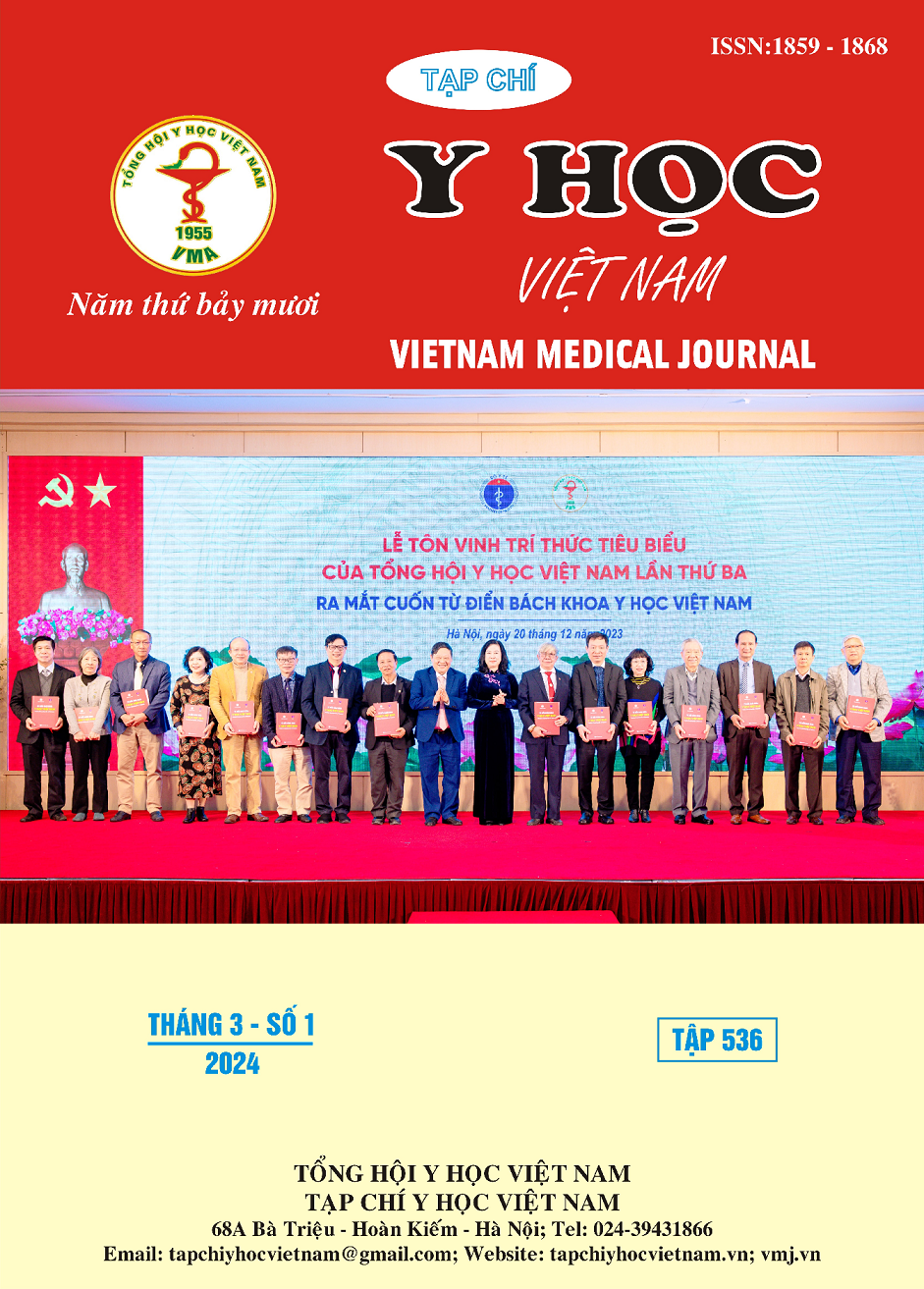RESULTS OF NON-OPERATIVE MANAGEMENT OF SPLENIC RUPTURE BY BLUNT ABDOMINAL INJURY AT THAI NGUYEN NATIONAL HOSPITAL
Main Article Content
Abstract
Background: The spleen is the most frequently ruptured organ in abdominal trauma. A ruptured spleen causes intra-abdominal bleeding. Without proper diagnosis and treatment for this condition, it can lead to hemorrhage shock and even death. Objectives: To evaluate the results of nonoperative management (NOM) of blunt splenic by blunt abdominal injury at Thai Nguyen National Hospital. Methods: Prospective, cross-sectional study was carried out on 62 patients who were diagnosed with the splenic ruptureby blunt abdominal injury then got the nonoperative management (NOM) at Thai Nguyen National Hospital from January 1st, 2019 to June 30th 2023. Results: The average age was 31.18 ± 14.9 (4 – 66), age group from 16 to 55 was 79.1%. The sample size was 83.9 % male; the male/female ratio was 5/1. Stable responder with fluid challenge was 93.5%; transient responder was 6.5%. The success rate of NOM was 91.9%; 14 patients who had an angioembolization accounted for 24.6%. There were 5 cases of failure-NOM which accounted for 8.1%. Conclusion: The results of non-operative management of splenic rupture by blunt abdominal injury had a high success rate. However, it is necessary to ensure good resuscitation monitoring conditions and evaluate to rule out damage to other organs in the abdomen that require surgery.
Article Details
References
2. Trần Ngọc Dũng. Nghiên cứu điều trị không mổ vỡ lách trong chấn thương bụng kín tại bệnh viện hữu nghị Việt Đức, Luận án Tiến sĩ Y học, Đại học Y Hà Nội, (2019).
3. Pietro Fransvea, Gianluca Costa, Giulia Massa et al. Non-operative management of blunt splenic injury: is it really so extensively feasible? a critical appraisal of a single-center experience. Pan African Medical Journal. 32 (1), 165-172 (2019).
4. James M Haan, Grant V Bochicchio, N Kramer et al. Nonoperative management of blunt splenic injury: a 5-year experience. Journal of Trauma and Acute Care Surgery, 58 (3), 492-498 (2005).
5. Danh Bảo Quốc, Phạm Văn Năng. Nghiên cứu đặc điểm lâm sàng, cận lâm sàng và kết quả điều trị bảo tồn không phẫu thuật vỡ lách trong chấn thương bụng kín tại Bệnh viện Trung ương Cần Thơ năm 2021 – 2022. Tạp chí Y học Việt Nam, 518 (2), 346-350 (2022).
6. Thomas MP Nijdam, Roy Spijkerman, Lilian Hesselink et al. Predictors of surgical management of high grade blunt splenic injuries in adult trauma patients: a 5-year retrospective cohort study from an academic level I trauma center. Patient safety in surgery, 14, 1-9 (2020).
7. Chien-An Liao, Ling-Wei Kuo, Yu-Tung Wu et al. Unstable hemodynamics is not always predictive of failed nonoperative management in blunt splenic injury. World journal of surgery, 44, 2985-2992 (2020).
8. Trần Văn Đáng, Nghiên cứu chỉ định và kết quả điều trị bảo tồn vỡ lách do chấn thương bụng kín tại bệnh viện đa khoa tỉnh Bình Dương, Luận án Tiến sỹ y học, Học viện Quân y, (2010).


